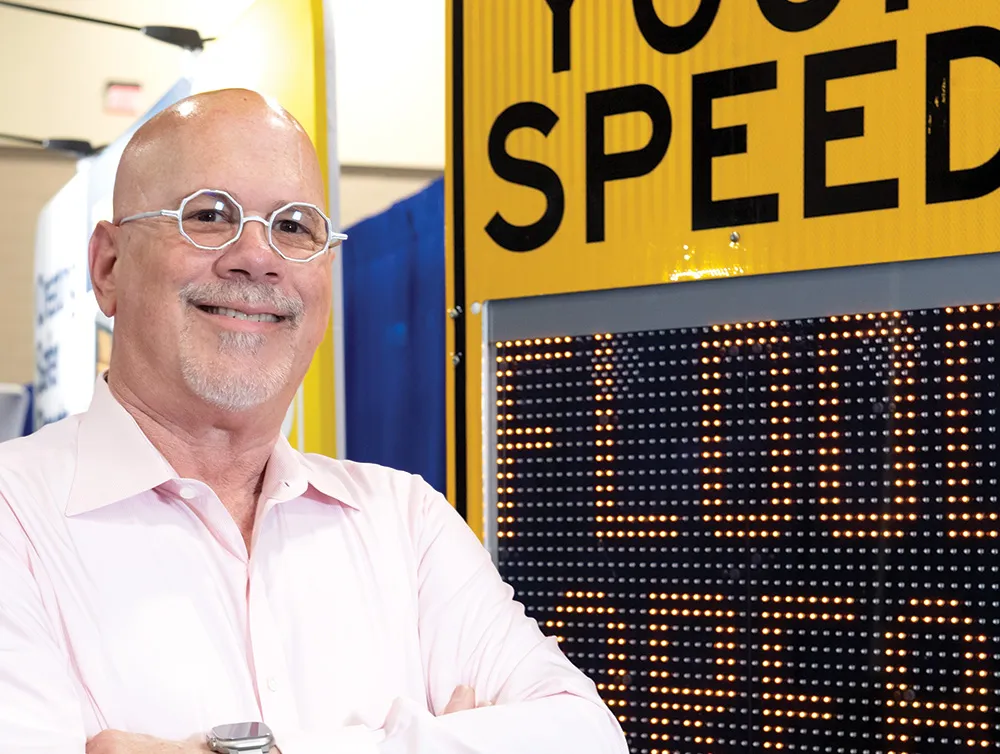
If there is one word that epitomises the current trend in enforcement technology then that word is consolidation: multi-function cameras, miniaturisation and combining radar and visual detection methods.
One example is Turkish company
Indeed the company has reduced the size and weight of its speed enforcement system to such an extent that the unit, which can detect vehicles travelling at up to 200km/h and incorporates ANPR, can be mounted on a bicycle – the Smart Patrol Bike to be precise. Based on the Company’s mobile 360° surveillance Smart Patrol technology, the system has been developed for use on bicycles and as is an integrated solution that connects and communicates with all units controlled in the ‘Smart Centre’.
According to Ekin, police departments around the world rely on bicycles as one of the most versatile tools in law enforcement, emergency medical response and security. The Smart Patrol Bike operates on moving or parked vehicles, people and objects, requires no infrastructural investment and enables law enforcement units to perform surveillance tasks in areas motor vehicles find difficult to reach because of congestion or other restrictions.
In a 45-minute trial around the congested part of Istanbul near the Bosphorus, the Smart Patrol Bike captured and read the number plates of 99 parked and 257 moving vehicles.
A different tack is being employed by
CiTE can be paired with either the radar-based stationary Stalker Phodar SE-2 (which has video and high-resolution still capture) or the laser-based and hand-held Stalker LidarCam.
The recently released the Phodar SE-2, a dual-camera photo-radar speed enforcement system capturing 24-megapixel still images and HD video evidence. LidarCam combines Stalker’s X-Series LIDAR with a high-resolution digital camera and can perform stand-alone roadside ticketing or complete citation processing through the CiTE S3ystem.
The latest version of Truevelo’s D-Cam system uses scanning radar as a trigger rather than in-road piezo electric sensors. Not only does the radar, which is built into the camera housing, mean there is no need to cut the road surface, it can also track 256 objects simultaneously to determine category, speed and position.
The enhanced detection means the system can simultaneously determine the vehicles’ category and apply the appropriate speed limits to each. As with previous incarnations, Truevelo uses three lines painted on the road to provide secondary verification of the vehicle’s speed.
“If the vehicle’s front axle is over the centre line it is travelling at the posed limit,” says John Harris, business development director with
The new Halo camera enforcement system from
It is based on a high definition radar tracking system that can detect and track the front or rear of each vehicle passing the system in either approaching or receding traffic for a range of up to 320m.
The data feeds into a decision making module which can be programmed to detect multiple offences including tailgating, junction blocking, mobile phone use and illegal U-turn as well as red-light running, spot and average speed detection, bus lane use and wrong-way driving.
According to Alex Jannink who heads Redflex’s Future Product Group, not only does Halo provide a single-pole solution, it also has automated secondary speed measurement for all speed offences using an independent optical measurement system.
Its hybrid imaging system combines visible and non-visible illumination (that can cover up to six lanes) on an offence-by-offence basis. For instance, using visible flash for red-light offences where a visual deterrent is desired, and infrared for average speed violations.
Another standard feature is the option to activate ANPR for all passing vehicles in conjunction with any enforcement combination, including vehicle hotlists.
Finnish sensor manufacturer
This data enables road authorities and integrators to assess in real time the flow of approaching and receding traffic in any given detection zone to enhances traffic management, incident and queue detection, speed enforcement, banned turns, wrong lane and red light violations.
In addition, the device is compatible with the company’s new communications platform and data gathering server service as well as with other intelligent detection systems.
At the end of last year
According to the company, at a recent demonstration for a police force in the Middle East the system detected 73 violations in less than five minutes – the fines from which would repay the cost of the unit.
The on-site set-up time is less than five minutes, operation is said to be straight forward and the use of post-capture ANPR simplifies the process allowing several violations a second to be captured. As there may be several vehicles in the same picture, the violator is identified with lane information and speed and the captured data is encrypted to Triple DES or AES12 standards. When operating autonomously the battery life is 12 hours and the system can be specified with visible or infra-red illumination.
Polish company
Finally, Lector Vision has developed a pair of sun glasses with built-in automatic number plate recognition. The glasses have an onboard camera, GPS, a CPU (with software to allow plate recognition to be executed inside the glasses) and a Wi-Fi link to a smartphone to export data to Lector Vision's remote Traffic Command Centre.
The company produces a traditional ANPR camera called Traffic Eye that integrates the camera, control electronics, illumination, image processing and control in a single device.









